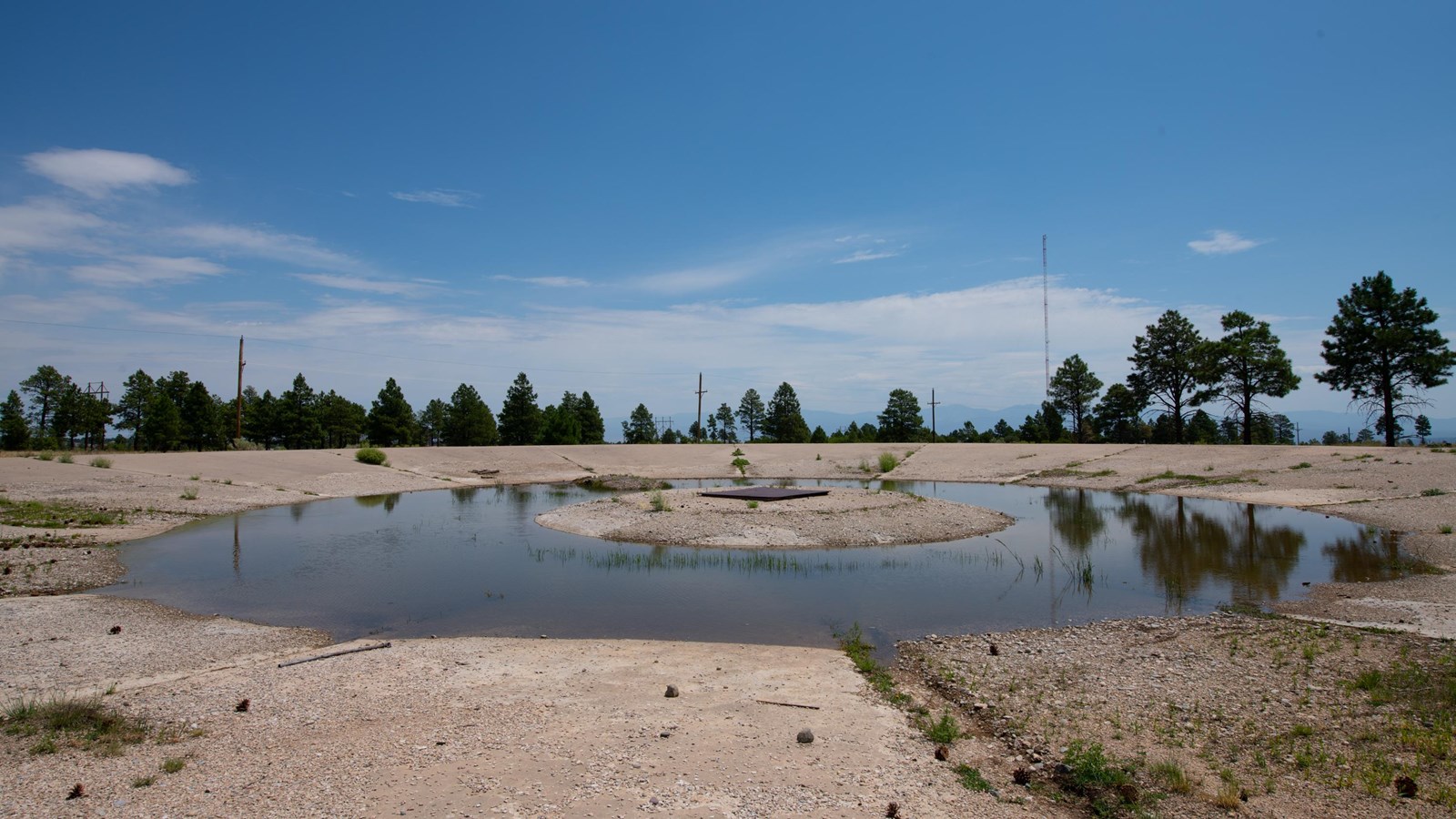Last updated: March 15, 2022
Place
The Concrete Bowl

LOS ALAMOS NATIONAL LABORATORY
This site is on Los Alamos National Laboratory property and cannot be accessed by members of the public.
During the Manhattan Project, uranium and plutonium were so rare and costly that scientists carefully conserved every gram. By the end of 1945, it cost an estimated $390 million to create the plutonium for the Manhattan Project—that is around $5.6 billion in today’s money. During the Trinity Test, Project Y scientists planned to carry out a test with half the world’s plutonium, so tensions were understandably high. If the Trinity Test did not succeed, scientists needed a way to recover the precious plutonium rather than losing it on a failed test.
Manhattan Project researchers discussed several possible recovery approaches; no approach was too far-fetched because of the scarcity of the material. One idea was the “water recovery method.” Researchers constructed a concrete bowl 200 feet in diameter and built a water tank on a tower in the center. In this water tank, they would place a bomb mock-up. The water from the explosion would fall into this concrete reservoir and allow researchers to filter out the bits of nuclear material. Scientists realized this method was not feasible on a full-scale nuclear test and moved on to other potential recovery methods.
This concrete bowl remains an example of the wartime laboratory’s practice of simultaneously testing different solutions to solve complex problems. In the decades since the bowl’s construction, weeds and trees have moved in and the local wildlife have discovered it as a reliable watering hole on the arid Pajarito Plateau.
Continue Your Journey
Behind the fence, Gun Site and Quonset Hut TA-22-1, were important to the creation of the atomic bomb. Learn more about the history of the Manhattan by visiting the Bradbury Science Museum! The museum’s interactive exhibits share stories from the project and provide a glimpse of other “behind the fence” historical sites.
